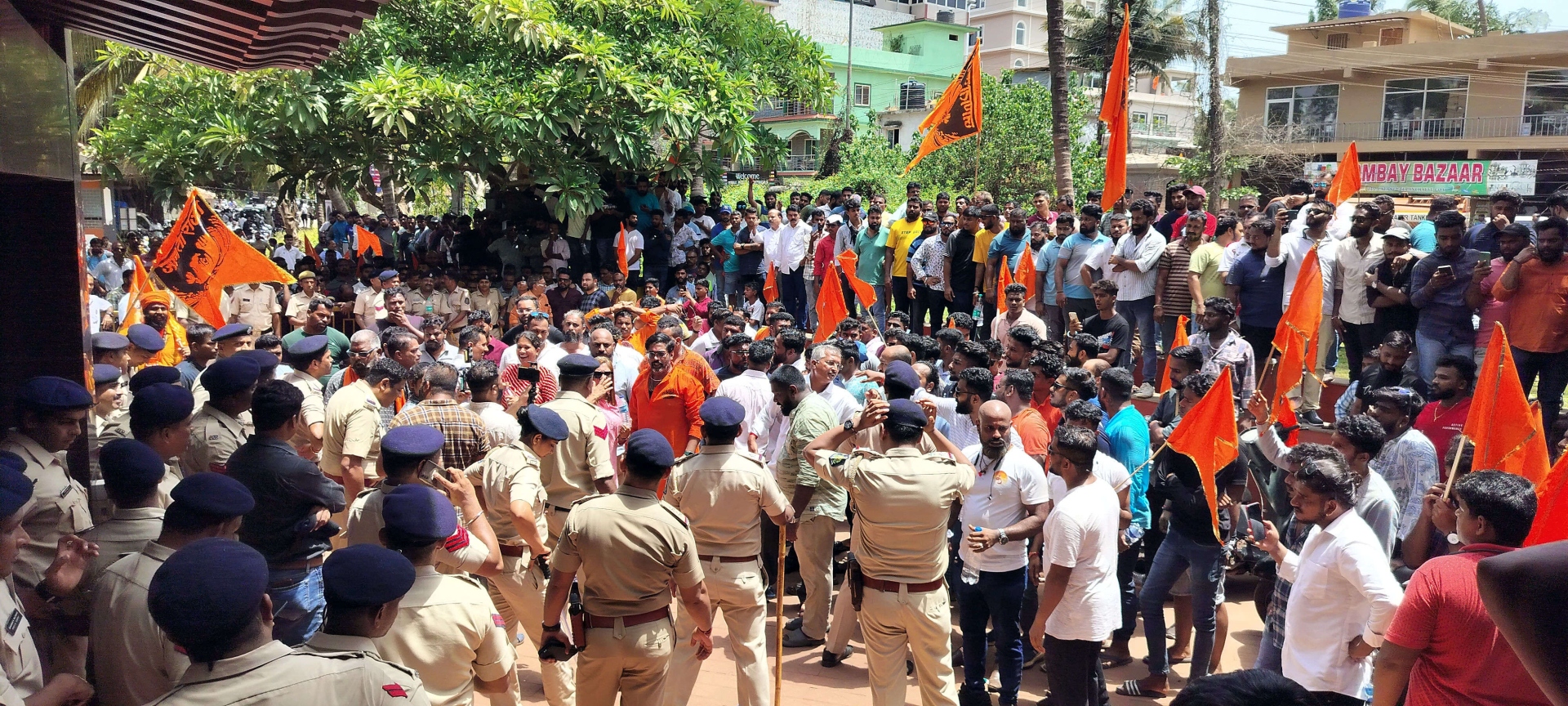
Police controlling a large crowd outside the Calangute Panchayat office on June 20, 2023.
MAPUSA
The installation of a life-sized statue of Chhatrapati Shivaji Maharaj at the Saligao-Calangute junction sparked a significant controversy last year, highlighting deeper social and political undercurrents in Goa.
The statue, installed without official approval, led to a clash of perspectives, with emotions running high on both sides.
The situation became particularly tense when the local Calangute panchayat, headed by Sarpanch Joseph Sequeira, passed a resolution to remove the statue, deeming it an illegal installation.
This move, however, provoked a strong backlash from sections of the local community, especially those identifying as staunch Shivaji devotees, or "Shiv Premis."
What followed was an intense standoff that lasted for nearly six hours.
A large group of Shiv premis, backed by right-wing groups, besieged the panchayat office on June 20, 2023, demanding that the resolution be withdrawn.
Facing intense pressure and aggression, Sequeira eventually relented.
He withdrew the resolution and issued a public apology to pacify the protestors. Despite this conciliatory gesture, the episode left behind a bitter aftertaste, raising questions about the legal and communal dimensions of the issue.
LEGAL, PROCEDURAL VIOLATIONS
The crux of the controversy lay in the fact that the statue of Shivaji Maharaj was installed without following proper procedures or obtaining the necessary permissions from the relevant authorities. This was not an isolated incident.
Over the past few years, several unauthorised statues and busts of the Maratha king have sprung up across Bardez, often installed overnight without any formal approval.
The first statue of Shivaji in Bardez was installed in Mapusa, following all legal protocols, including a resolution passed by the Mapusa Municipal Council.
Notably, Tushar Tople, a prominent Shivaji devotee and one of the key figures behind the installation of the Mapusa statue, openly criticised these unauthorised installations, noting that such actions go against the principles of Shivaji himself, who was known for his adherence to laws and order.
COMMUNAL UNDERCURRENTS
While the controversy initially centred on the legality of the statue’s installation, it quickly took on communal overtones.
“There was definitely an attempt to give a communal spin to the controversy over the installation of Shivaji Maharaj’s statue in Calangute. The entire protest also appeared to have a subtle backing of the establishment,” observed one local resident, who wished to remain anonymous.
Shivaji Maharaj’s legacy as a unifier of the Hindu community is often cited by his followers, but his true legacy is that of a ruler who transcended religious divides and promoted governance based on justice and law.
The sarpanch’s initial decision to remove the statue was based on legality, but the intense backlash from protestors, culminating in his apology, underscores the growing influence of identity politics in the region.
While the immediate issue of the illegal statue has been resolved for now, the larger question remains: How will Goa’s society navigate the increasing politicisation of religious and cultural symbols?
The Calangute episode serves as a reminder that when symbols of unity are used to sow division, it is the very fabric of communal harmony that is at risk.